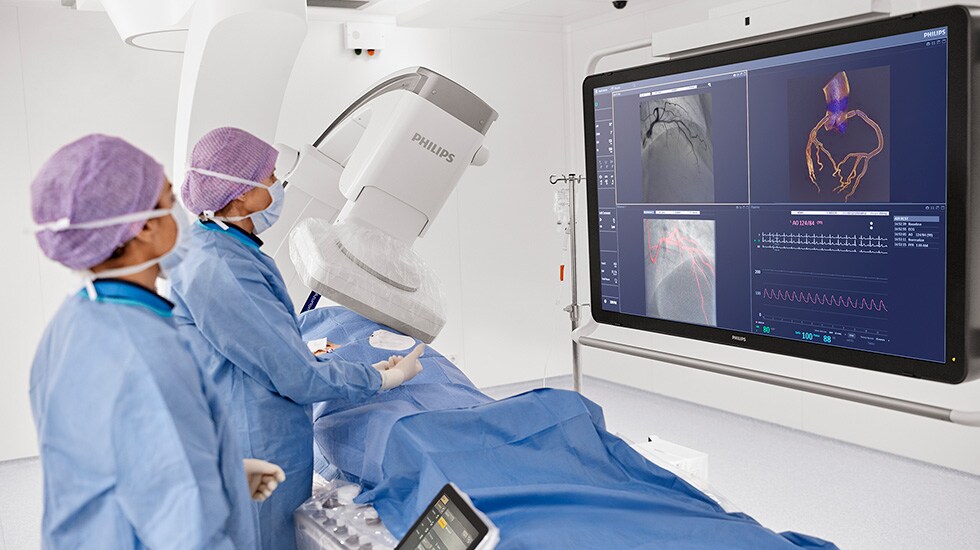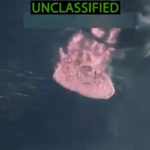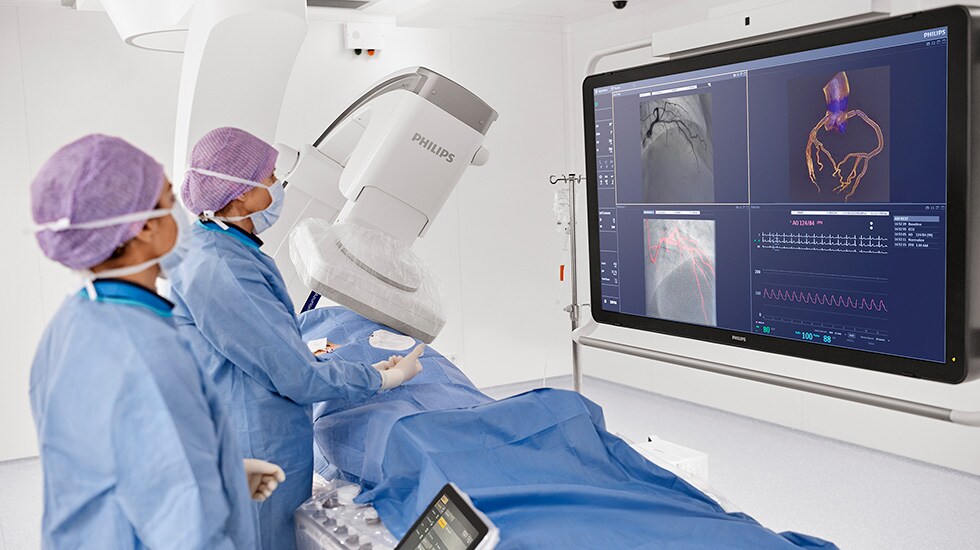
What You Should Know:
– At the annual Transcatheter Cardiovascular Therapeutics (TCT 2025) meeting, Philips introduced an industry-first innovation that integrates pre-operative Computed Tomography (CT) data directly into the cath lab workflow.
– The new capability, available through the integration of Philips’ Advanced Visualization Workspace (AVW) with the Azurion image-guided therapy system, marks a significant first step toward making CT-guided percutaneous coronary intervention (PCI) standard practice.
Seamless Synchronization: The Follow C-Arm Capability
The core of the innovation is the Follow C-arm capability, which automatically synchronizes the 3D reconstruction of coronary arteries with the movement of the Azurion C-arm. As the C-arm angulation changes, the CT volume rotates in real time to match, providing interventionalists with a dynamic 3D anatomical view without requiring manual interaction.
This seamless connection allows clinicians to combine the detailed insights of pre-operative CT imaging with the flexibility and precision of live X-ray guidance inside the cath lab. Publications have indicated that leveraging Coronary computed tomography angiography (CCTA) in this manner may lead to a reduction in contrast medium use and radiation dose during interventions.
Supporting the Shift Towards CT-Guided PCI
Coronary computed tomography angiography (CCTA) is increasingly recognized in global clinical guidelines as a first-line tool for the diagnosis and planning of coronary artery disease. With more patients arriving at the cath lab having already undergone prior CT scans, there is a clear demand among physicians to incorporate this planning information directly into their interventional procedures.
“By bringing pre-operative CT into the cath lab and linking it directly to the movement of the C-arm, Philips is delivering an industry-first that helps interventionalists prepare for and execute PCI procedures with greater confidence,” said Mark Stoffels, Business Leader Image-Guided Therapy Systems at Philips.
This integration helps interventionalists expand the use of CT beyond just diagnosis and planning, supporting a future where the detailed anatomical insights of CCTA can reliably guide complex PCI procedures.














